Ron Howe stitched two Dak-Dak donks together to create this bonkers front-engined, flat-eight VW Squareback gasser
This article on Ron’s VW gasser was originally published in the March 2018 issue of Street Machine
WITH a squillion of the things sold around the planet during the 50s, 60s and 70s, the Volkswagen Beetle would have been plenty of people’s first car. Arizona’s Ron Howe was one of them: Now 55, he bombed around in a ’66 Beetle when he first grabbed his licence as a kid. The allure of the little round, rear-engined, cheap-as-chips commuter car must have been strong though, because in the time since he’s owned several more dak-daks scattered amongst a lifetime of bread-and-butter US stuff.
And now this!
As well as Beetles, VW made a model called the Type 3. Available as a two-door sedan, fastback and squareback wagon, these bigger-than-Bug vehicles shared plenty of parts with their little brothers, such as the rear suspension, chassis spine and most of the engine. But goddamn, VW never built any of its cars with a front-mounted flat-eight engine, heavy-duty five-speed gearbox and a nine-inch under the butt!
Inspired by the 1960s Gas-class drag cars, Ron’s wagon sits nice and tall. The rail-type chassis allowed him to craft a full tilt-front by stitching the VW’s steel panels together and hinging them on the nose of the rails. The twin VW air-cooled engines benefit from the two oil coolers installed sideways in the nose
Although Ron has owned this car for a decade, the pace of the project increased when he retired from his job as a delivery driver last year. He began with evening and weekend work, and with his days to himself, that grew to become almost full-time in the garage to get the car ready for last year’s SEMA show in Las Vegas.
Four Weber-copy EMPI 48mm downdraught carburettors sit on a box-like plenum chamber to feed the Scat twin-port heads through Ron-made intake tubes. VW engines usually have vertical engine-driven cooling fans with ducting to the heads and barrels, but Ron’s have unshrouded cooling fins like a motorbike, but with a couple of top-mounted cooling fans to move some air around the hot bits
Like Beetles, these Type 3s are built on a low flat-pan chassis that is bolted to and supports the sills of a monocoque-type body. The standard chassis also carries the front and rear suspension and the rear-mounted engine and gearbox. It’s an interesting design that allows the VW’s rolling chassis to be used as the basis for kit-type cars, from Ferrari fakes to those glittery fibreglass beach buggies you’ll sometimes see cruising in summer. But even without its original chassis, VW bodies retain enough structural integrity to be placed on another chassis without too much mucking around.
Ron used that to his advantage, building his own front-engined, rear-drive gasser-style underpinnings to poke under the VW wagon body. It rolls on a leaf-sprung beam front end with friction dampers, and a nine-inch rear end located with Eibach coils, gas dampers, a Watt’s link and those long, slender trailing arms.
The two 2332cc four-cylinder donks retain separate crank cases, sumps and oiling systems but are linked to create what amounts to a flat-eight. To transfer the twist, a fabricated nylon-bushed alloy coupling connects the flywheel-end of one crank to the pulley end of the second, and compensates for any minor misalignment. The engines and the five-speed gearbox are solid-mounted within the rail-type chassis
That’s enough to make most dak-dak nuts’ heads implode, but it gets better. There have been a few front-engined V8 VWs built over the years, but Ron has retained air-cooled Volkswagen power, installing two pumped-up Vee-Dub motors. It’s up to you whether you consider what Ron has built to be a fabricated flat-eight motor or twin flat-fours, but no matter what, it’s nearly 4.7 litres’ worth of cranky dak-dak!
Ron credits a bloke by the name of Fish at Doug’s Buggs & Bunnies in Arizona with the engine assembly. Each donk spans 2332cc, thanks to traditional VW hot-rodding hardware such as big 94mm AA-branded pistons (and the barrels they slide in) linked to Scat 84mm counterweighted forged stroker cranks with Scat rods. The whole deal spins within machined late-type VW crank cases. Closing in the cylinders are four Scat twin-port heads – one for each side of each motor – running two Scat C45 performance cams.
The power output hasn’t been measured on a dyno yet, but a finger-in-the-breeze guess – based on what a stout street VW punches out – would be around 350 horses from the eight cylinders.
Eight cylinders. Eight exhaust ports. Eight exhaust pipes. Easy! The eight individual pipes peer out from below the front wheelarches
Behind all that is a Tremec TKO five-speed with a fabricated QuickTime bellhousing to install it to the flywheel-end of the second VW mill. A built three-inch tailshaft takes the power back – and with the high ride height of this Type 3, down – to a nine-inch. The brakes are what Ron describes as off-the-shelf GM-style discs up front and Ford drums on the nine-inch.
Originally painted in a mellow yellow, more than four decades of car park kisses and sun-fade – and a stripped guard and door – have been retained on the wagon body. The original door cards remain, and to complement that patina, Ron has left his home-fabbed steel chassis looking naked too.
The VW’s floor-hinged pedals have been replaced with Wilwood pendulum items hung under the fabricated dash. The steering column is a GM-type hot-rodder special. With a rear-mounted drivetrain, a stock VW has a low floor and roomy cabin, but with a TKO five-speed sitting under Ron’s creation, there’s a bit more going on here
So, why? “Just because I could!” Ron says of the car’s build theme. “I really like problem-solving and engineering and making parts. I decided to build a gasser with inspiration from my son Nathan.
“This build was just something that was different and a challenge to myself.”
Judging by the end result, Ron well and truly rose to that challenge!
RON HOWE
1971 VOLKSWAGEN TYPE 3 WAGON
Paint: Original VW yellow – or what remains of it
ENGINE
Brand: VW
Induction: Four EMPI 48mm downdraught carbs
Heads: Scat alloy dual-port
Camshaft: Scat C45
Conrods: Scat forged
Pistons: AA 94mm cast
Crank: Scat 84mm forged stroker
Ignition: Two Bosch 009-type distributors, Accel Super Stock coils
Cooling: Two fan-forced oil coolers, two 3000cfm thermo fans installed above engine cooling fins
Exhaust: Individual engine pipes crafted by Ron
TRANSMISSION
Gearbox: Tremec TKO five-speed
Clutch: Kennedy
Diff: Ford 9in with 4.1 gears and Detroit Locker
SUSPENSION & BRAKES
Front suspension: Leaf springs, straight beam axle, friction dampers
Rear suspension: Eibach coil springs, gas dampers
Brakes: GM discs and calipers (f), Ford drums (r)
Master cylinder: Afco; Wilwood pedal box
WHEELS & TYRES
Rims: E/T 15×4.5 (f), American Racing 15×14 (r)
Rubber: Mickey Thompson Sportsman S/R; 24×5.00 R15LT (f), 29×18.00 R15LT (r)
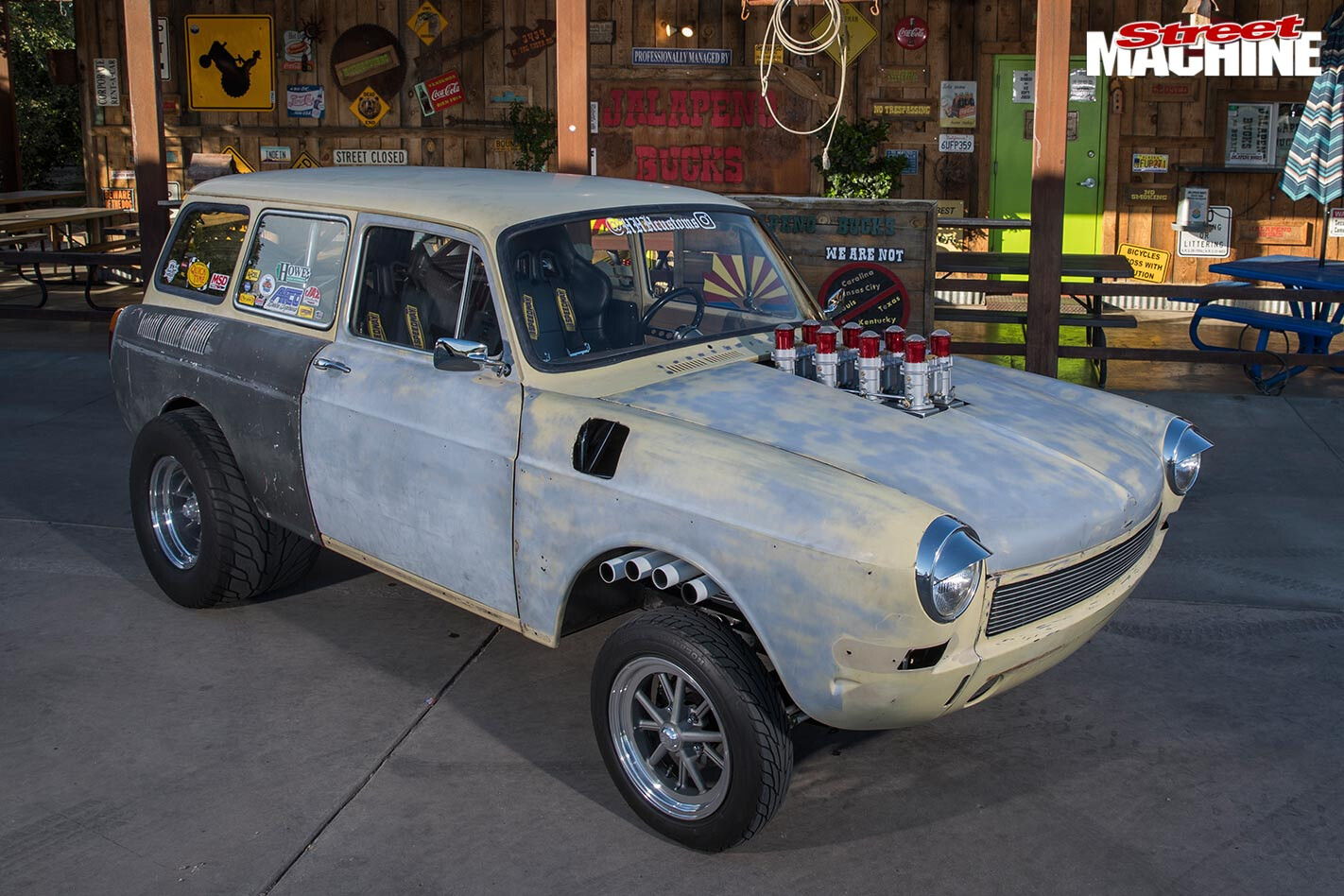
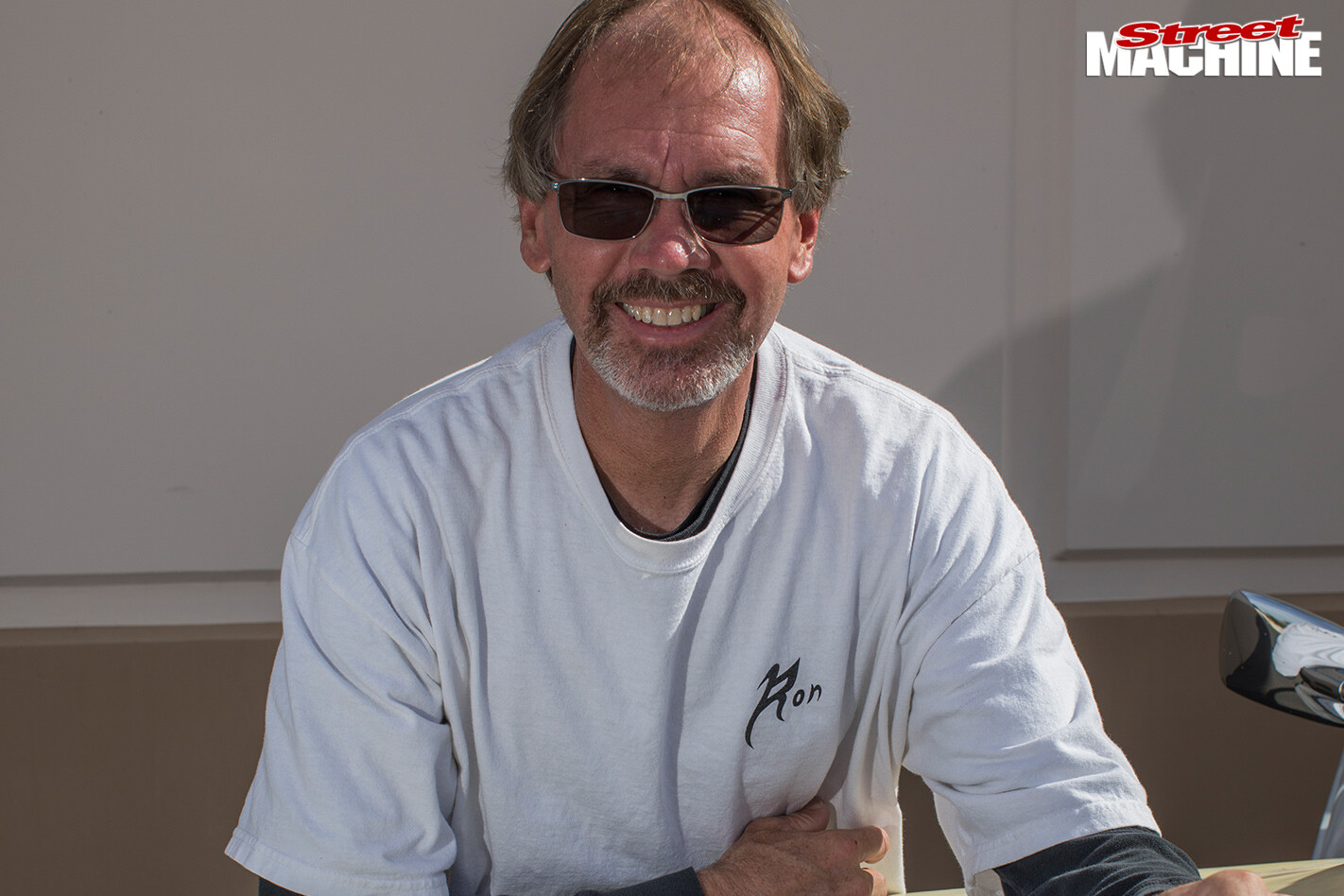
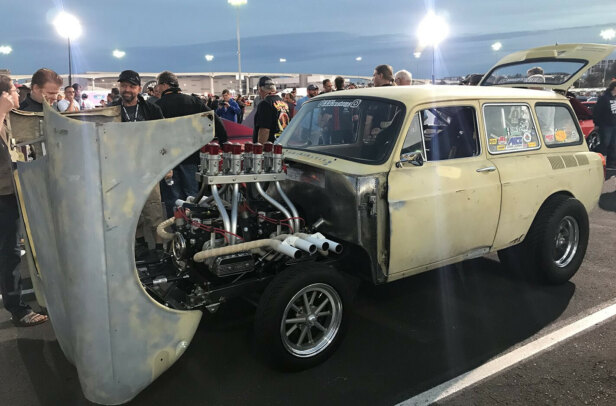
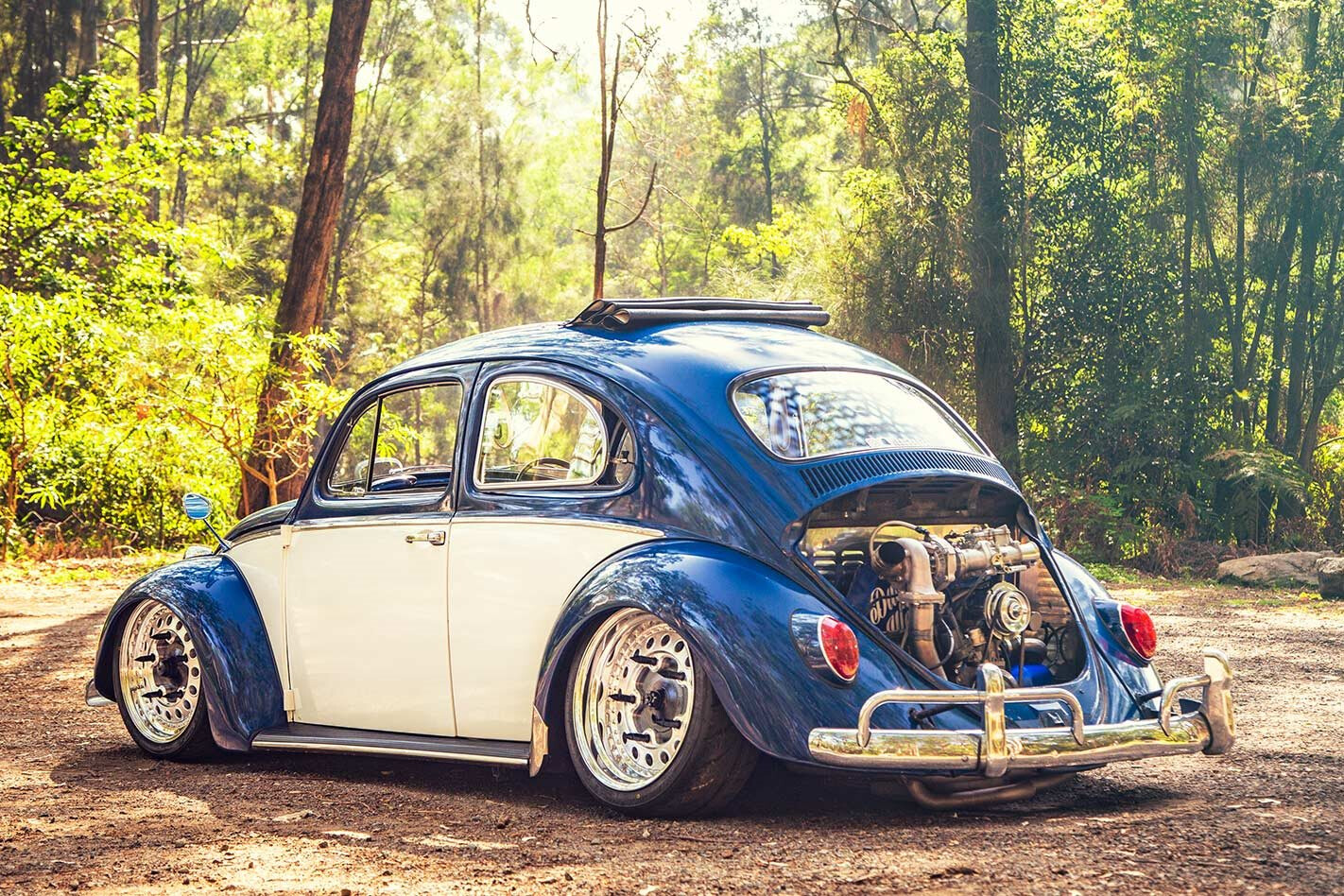
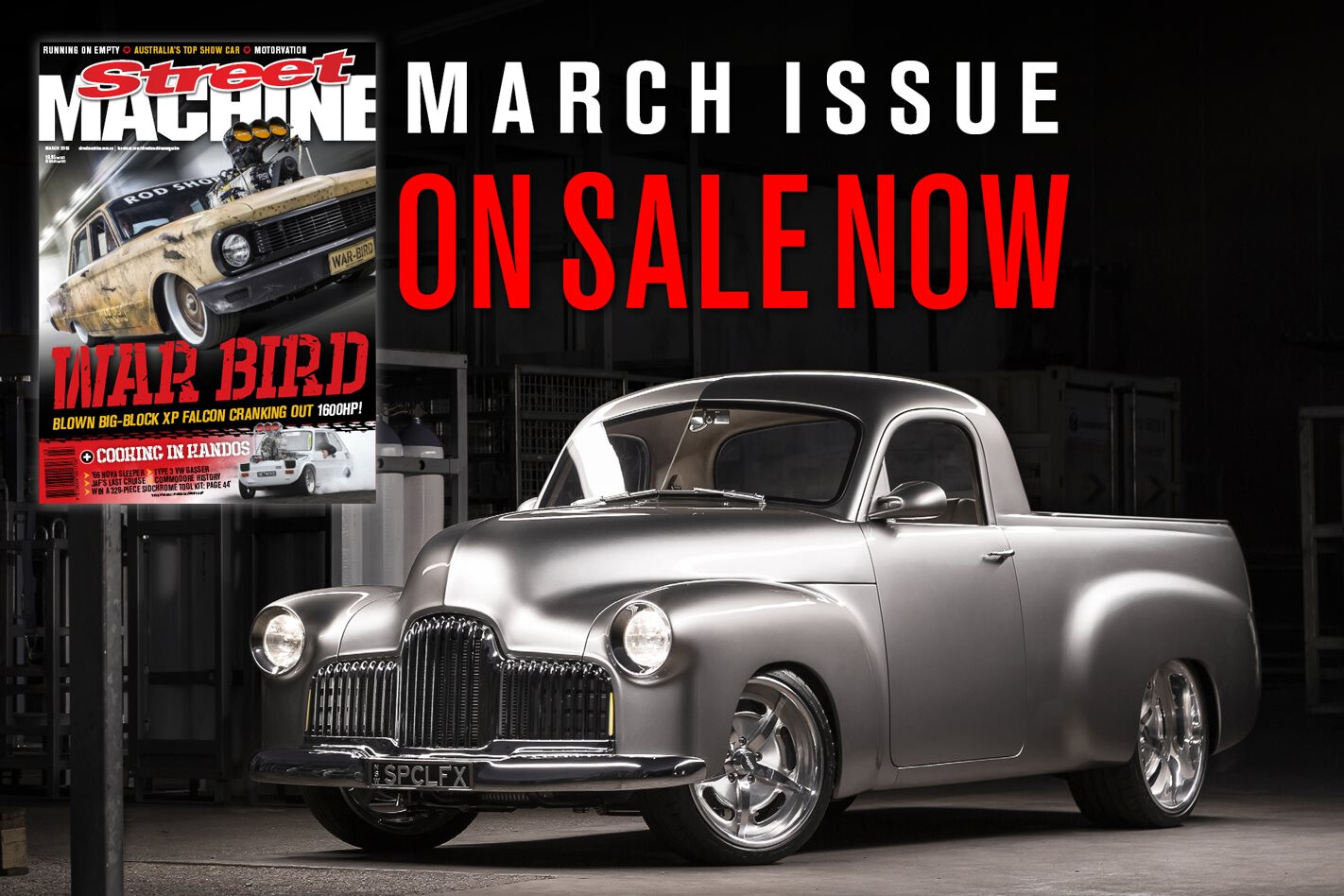
Comments